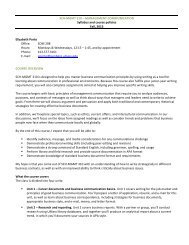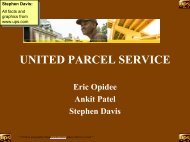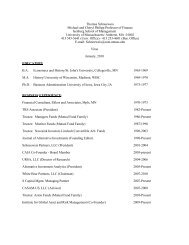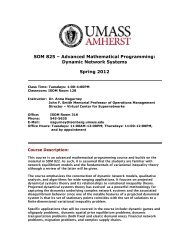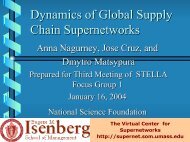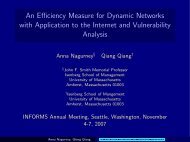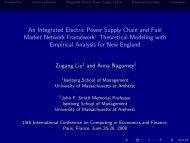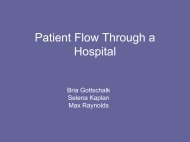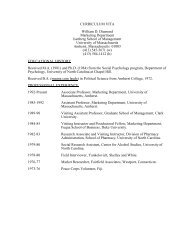TR News - Transportation Research Board
TR News - Transportation Research Board
TR News - Transportation Research Board
- No tags were found...
Create successful ePaper yourself
Turn your PDF publications into a flip-book with our unique Google optimized e-Paper software.
RESEARCHPAYS OFFService Life ModelingSelecting Repair and Rehabilitation Optionsfor Bridge StructuresALI AKBAR SOHANGHPURWALA AND IVAN R. LASASohanghpurwala is President,CONCORR, Inc.,Sterling, Virginia; andLasa is Corrosion Mitigationand RehabilitationTechnologist, Corrosion<strong>Research</strong> Laboratory,Florida Department of<strong>Transportation</strong>,Gainesville.View of one of the examinedbridges on I-95 nearBangor, Maine, showingcracking caused by reinforcementcorrosion. Conditionevaluation includeda delamination survey,cover depth measurements,chloride ion contentanalysis, andpetrographic analysis.Evaluating the corrosion condition of areinforced concrete structure is essentialin developing a strategy for repair andrehabilitation after corrosion-induceddamage. Several destructive and nondestructive testmethods and techniques are available to ascertainthe corrosion condition of the reinforcement in portionsthat do not yet show concrete damage. Most ofthese techniques, however, require significantresources to implement and then additionalresources to interpret the data and make the decisionsabout repair and rehabilitation.The National Cooperative Highway <strong>Research</strong> Program(NCHRP) therefore initiated a project todevelop a protocol for evaluating the condition ofbridge superstructure elements, for estimating theremaining service life, and for identifying the optionsfor mitigating the corrosion. The project findings,published in 2006 in NCHRP Report 558, Manual onService Life of Corrosion-Damaged Reinforced ConcreteBridge Superstructure Elements, produced a conditionsurvey protocol, a model for remaining servicelife, and a susceptibility index to designate the likelihoodof corrosion.ProblemThe National Bridge Inventory database, maintainedby the Federal Highway Administration, contained atotal of 587,964 bridges as of 2002. The average ageof the bridge structures in the database is 40 years;41 percent of the bridges are at least 40 years old.The condition of the nation’s aging highwaybridge infrastructure has gained significant attentionin the past two decades. Several independent evaluationsof the condition of the nation’s infrastructurehave used the ratings in the database. These studiesascertained that 14 percent of the bridges were ratedstructurally deficient and that the primary cause ofthe deficiency was corrosion of the reinforcing steel.For the 20-year period from 1999 to 2019, the estimatedcost of maintaining the nation’s bridges is $5.8billion per year, and the estimated cost of improvingthe same bridges and eliminating their deficiencies is$10.6 billion.To address deterioration from corrosion, a bridgeowner must decide whether to maintain, repair, orreplace the structure, considering its present conditionand its expected condition. The owner also mustidentify the materials and methods that are mostappropriate to the task. Because of the lack of standarddecision-making processes, most owners havemade these complex decisions by relying on localexperience and expertise. These decision-makingprocesses often have resulted in inefficient, costly,nonstandard, and nonoptimal solutions.A protocol capable of determining the optimalcourse of action—maintenance, repair, or replacement—andof assisting in the selection of the bestmaterials and methodology was urgently needed.SolutionDetermining the optimal course of action requiresinformation about the present condition of the structureand its expected deterioration. The present conditiondetermines the quantity and the type of repairsnecessary. The owner can use the expected futuredeterioration to determine the efficacy of alternativerepairs and to assist in selecting a repair-and-<strong>TR</strong> NEWS 264 SEPTEMBER–OCTOBER 200927



